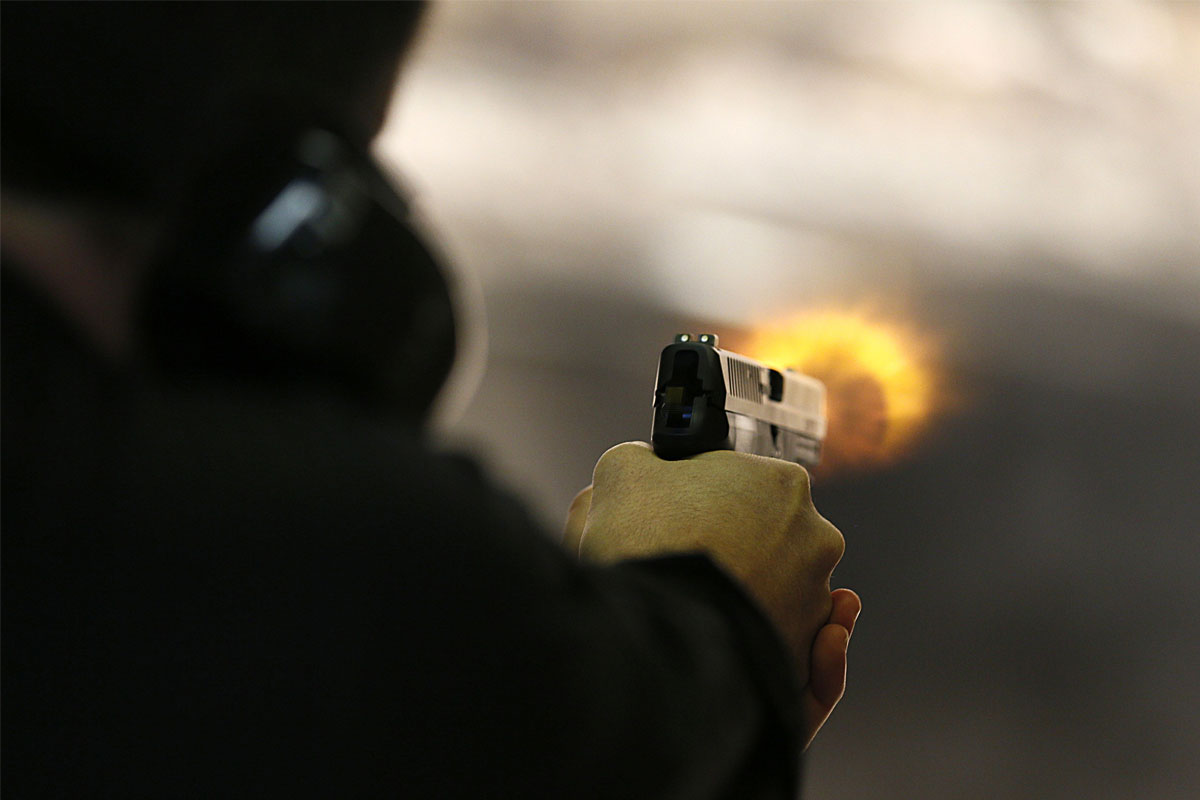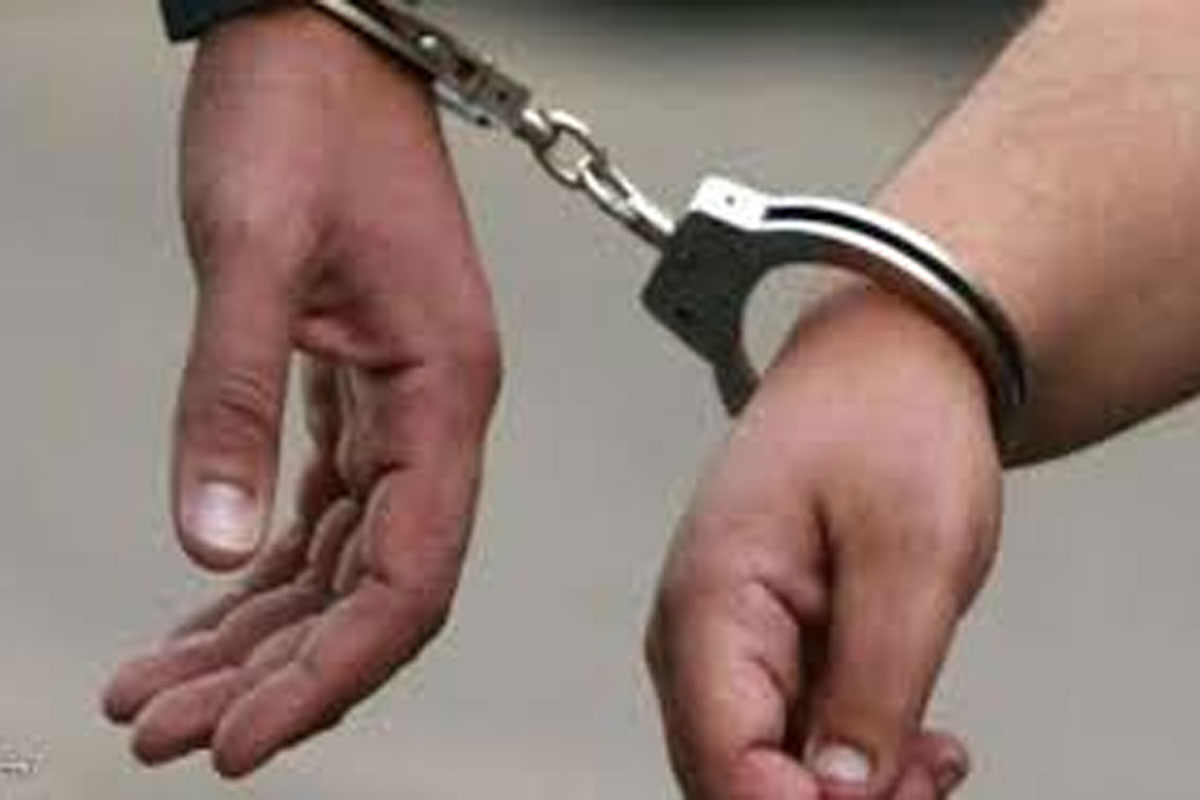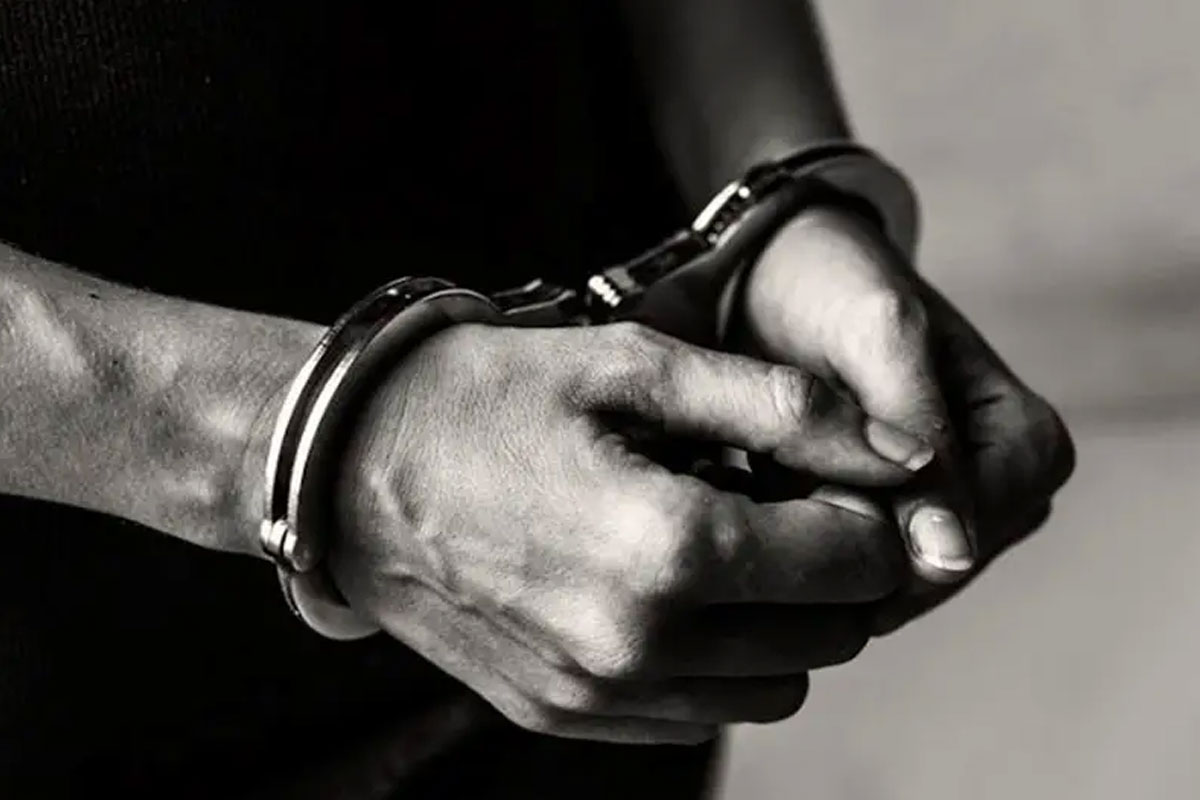
Bizarre Stories of the Paranormal from London’s Lincoln’s Inn
ByBrent Swancer
THE Honourable Society of Lincoln’s Inn, also simply called Lincoln’s Inn, is located in London, England, and is not a place to stay but is rather one of the four Inns of Court in London, long considered to be the legal heart of England. This is where since the 15th century barristers and lawyers have studied law and are called to the bar, and where trials are held, and it is widely considered to be one of the most eminent professional bodies of judges and lawyers in the world. It sits right nearby other similarly prestigious, historic and important institutions, including the Royal College of Surgeons, the London School of Economics and Political Science, the Royal Courts of Justice, and King’s College London’s Maughan Library, and also lies adjacent to the Lincoln’s Inn Fields, which is the largest public square in London. Lincoln’s Inn is a historic, venerable place home to an illustrious history, but it is also apparently home to plenty of ghosts.
Many of the hauntings here revolve around the often very public and very brutal executions that were once held here, typically in the Lincoln Fields. One of these was the 1586 execution of Lord Antony Babington, who was found guilty of being a traitor and plotting to kill Elizabeth I. The punishment was harsh to say the least. Babington and some of his followers were hanged and then drawn and quartered while still conscious. Apparently, their cries of pain were so horrific that executioners were ordered to speed up the execution by the queen herself. Another notorious execution held here was that of Lord William Russell, sentenced to death in 1683 for his part in plotting to kill King Charles II. Legend has it that the executioner, a man named Jack Ketch, hacked away at the man’s neck four times to remove the head, when it was typically supposed to be done with one, decisive blow. It is said that the ghosts of both men lurk about the Lincoln’s Inn Fields, with Russell appearing as headless and very upset, and there are occasionally reported their screams and wailing from the shadows.
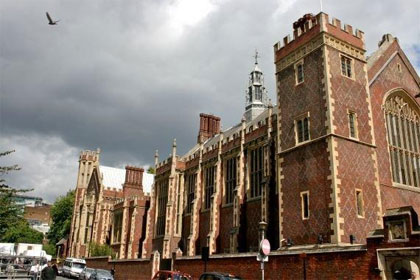 Lincoln’s Inn
Lincoln’s Inn
Other ghosts that supposedly haunt the Lincoln Fields actually have their origin in a building other than the Lincoln’s Inn. Sitting right next to the fields is the Royal College of Surgeons, and the story here is connected with a macabre experiment once carried out here by a Professor Aldini, in which he sent an electrical current through the corpse of a dead criminal in order to make it jump, quiver, move its limbs, and even open its eyes. The beadle, or ceremonial officer, of the Inn was so horrified by what he saw that he allegedly killed himself because he couldn’t bear what he had seen. The lore says that this beadle, as well as the ghost of the criminal whose corpse was used, because why not, haunt both the Royal College of Surgeons and the Lincoln Inn Fields. From an article in the Victorian magazine Leisure Hour was an article called Haunted London: Lincoln’s Inn Fields, there is also the story of a spectral gilded coach, with a skeleton coachman that rides through the square only to vanish into thin air.
One strange ghostly tale from the Lincoln’s Inn comes from the lawyer Robert Percival, who once lived and studied at Lincoln’s Inn. The story goes that one evening he was there in his room late at night deep in his studies, and at midnight he was shocked to see a sinister robed figure enter. Apparently Percival at first thought this was intruder, so he attacked the figure with his sword, as you do, but the weapon passed right through it as if through air. The figure then lowered its hood and showed itself to be Percival himself, who stared on in disbelieving horror. This hooded figure had his face, but it was bruised, cut, and battered, as was its chest, which it also revealed to him before vanishing. The frightened Percival took this to be a portent of doom, and he was right, as not long after this he would be murdered. It is said that to this day the room his haunted by an entity that similarly appears as a doppelganger for those whose violent deaths are looming, always with the same wounds they are to incur.
 One of the weirdest paranormal stories from the Lincoln’s Inn allegedly began on February 25, 1913, when a group of men walking past the lodge of the legal offices at Lincoln’s Inn when they were startled by a panicked scream from up above. When they looked, they could apparently see a man through one of the windows who seemed to be flailing about as if struggling with someone. The men rushed to the room where he was, only to find him dead. The dead man had been a barrister named Charles Appleby, and was covered in bloody scratches that looked as if they had been inflicted by claws or the talons of a very large bird. Not long after this incident, another barrister named John Radlett was found dead in the very same office, apparently having hanged himself, and on the inside of the locked door were found gashes and gouges in the wood as if an animal had been locked in there. Reports began to do the rounds that there was a ghost bird on the loose, and that there was an evil presence felt there to the point that many people at the law offices quit and moved out. The story supposedly made the rounds and captured the attention of two newspaper reporters by the names of Sir Max Pemberton and Ralph Blumenfeld, who decided to lock themselves in the room, cover the floor with chalk, and see what happened. The book True Ghosts & Spooky Incidents, by Vikas Khatri, says of what happened next:
One of the weirdest paranormal stories from the Lincoln’s Inn allegedly began on February 25, 1913, when a group of men walking past the lodge of the legal offices at Lincoln’s Inn when they were startled by a panicked scream from up above. When they looked, they could apparently see a man through one of the windows who seemed to be flailing about as if struggling with someone. The men rushed to the room where he was, only to find him dead. The dead man had been a barrister named Charles Appleby, and was covered in bloody scratches that looked as if they had been inflicted by claws or the talons of a very large bird. Not long after this incident, another barrister named John Radlett was found dead in the very same office, apparently having hanged himself, and on the inside of the locked door were found gashes and gouges in the wood as if an animal had been locked in there. Reports began to do the rounds that there was a ghost bird on the loose, and that there was an evil presence felt there to the point that many people at the law offices quit and moved out. The story supposedly made the rounds and captured the attention of two newspaper reporters by the names of Sir Max Pemberton and Ralph Blumenfeld, who decided to lock themselves in the room, cover the floor with chalk, and see what happened. The book True Ghosts & Spooky Incidents, by Vikas Khatri, says of what happened next:
The two men spent the evening playing cards, by midnight, they were getting bored with the whole idea. It seemed obvious that nothing untoward was going to happen. They were about to leave when the locked door swung open. The windows, which had been bolted shut, also opened by themselves and the harsh wind entered the room, extinguishing the gaslight. There was a horrific beating noise which sounded like the flapping of enormous wings. In the dim light the two men could just see a large dark object moving across the room and out through a wall. Then the noise stopped and the light came back on. A reporter, who had been waiting downstairs heard the commotion, rushed into the room and all three men stared in disbelief at the floor. In the chalk, running from the centre of the room to the corner, were a set of gigantic claw marks! A few years later the building was demolished and the giant bird, if that is what it was, was never heard of again.
It is quite the bizarre tale, and one wonders just what this entity could have been or whether it was just a sensationalized report common to the era. We are left to wonder about stories like this. Is the Lincoln’s Inn a haven for weird supernatural forces, and if so, why? Or is this merely tall tales and lore, nothing but urban legends? It is all certainly an imposing place with a long and often bloody history, so who knows? Whatever the case may be, it sure makes for a good yarn at the very least. MU
The Strange Mystery of the Georgia Guidestones
By Brent Swancer
THERE are many monuments and monoliths from history scattered throughout the world. The ancients have left clues from the past that stand strong even today, and perhaps will for many more millennia, yet there are equally mysterious structures that date from far more modern times. While many might think that looming stone structures are the realm of such ancient places as the Pyramids or Stonehenge, there are equally enigmatic structures that have gone up in modern times, yet retain just as much mystery as their older brethren. One of these is a massive cryptic stone structure in the U.S. state of Georgie, with a strange tale behind it and its meaning never quite fully understood.
The whole story begins in 1979, when a mysterious stranger approached Joe Fendley, the president of the Elberton Granite Finishing Company, in Elbert County, Georgia, with a rather strange proposal. The man called himself “Richard C. Christian,” but gave no identification or credentials, and even straight out told Fendley that this was a pseudonym. The only thing he would say about himself was that he represented an unnamed group of “loyal Americans” from outside of Georgia, without further elaboration. Fedley’s first instinct was that the guy was a loon, but since he seemed to be dressed nicely and looked well-off, he decided to listen to what he had to say. Christian then explained that he wanted to build a grand monument composed of four massive granite slabs 16 feet 4 inches tall, 6 feet, 6 inches wide and 1 foot, 7 inches thick, weighing 20 tons apiece, surrounding a center slab and all of it topped off with a giant capstone, the whole of it estimated to weigh 119 tons. There were also to be various meticulous engravings upon the stone slabs written in eight of the world’s major languages.
Fendley thought the man must be joking, incredulously asking what this colossal monument would be for, and Christian explained that it was to serve as a guide to future generations, as well as a compass, calendar, and clock. It was meant to be able to withstand catastrophes, natural disasters, and the unstoppable march of eons of time, so that even if civilization were to be reduced to a few survivors they would be able to find the stones and put to use the crucial information they contained. Christian was so serious, sincere, and eloquent about it all that Fendley was beginning to feel that he was actually serious about all of this, but the proposed project was very ambitious, extremely large and complex, and an undertaking of this scope would be very expensive. Indeed, his company had never attempted anything near this magnitude before. He told the mysterious Christian that it would require stones larger than had ever been quarried before in the region, as well as an enormous amount of manpower, heavy equipment, and expertise, and threw out an estimate larger than he thought it would actually take, to which Christian accepted without questions or haggling.
 Fendley pushed on who it was that wanted the monument built, but Christian would offer no further information than he had already given, merely mentioning that they had been planning the project for 20 years. He also refused to give any more information on himself, and indeed told Fendley that if he were to accept the project it was to remain strictly confidential. This was a problem, because Fendley had to make sure he would actually be paid for such an undertaking before he would even consider it. To this end, he decided to refer Christian to a banker he knew by the name of Wyatt Martin, who agreed to meet with the enigmatic man. Maritn would say of his initiation into all of this strangeness:
Fendley pushed on who it was that wanted the monument built, but Christian would offer no further information than he had already given, merely mentioning that they had been planning the project for 20 years. He also refused to give any more information on himself, and indeed told Fendley that if he were to accept the project it was to remain strictly confidential. This was a problem, because Fendley had to make sure he would actually be paid for such an undertaking before he would even consider it. To this end, he decided to refer Christian to a banker he knew by the name of Wyatt Martin, who agreed to meet with the enigmatic man. Maritn would say of his initiation into all of this strangeness:
Fendley called me and said, ‘A kook over here wants some kind of crazy monument. But when this fella showed up he was wearing a very nice, expensive suit, which made me take him a little more seriously. And he was well-spoken, obviously an educated person. And when he told me what it was he and this group wanted to do, I just about fell over. I told him, ‘I believe you’d be just as well off to take the money and throw it out in the street into the gutters.’ He just sort of looked at me and shook his head, like he felt kinda sorry for me, and said, ‘You don’t understand.’ He said he was going to send the money from different banks across the country because he wanted to make sure it couldn’t be traced. He made it clear that he was very serious about secrecy.
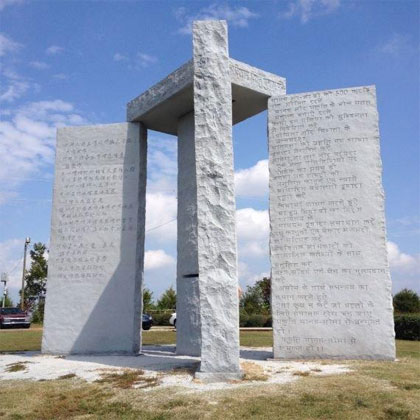 Martin explained to him that without reassurance about who he was and whether he could pay, there was nothing he could do for him, and so he and Christian came to a compromise. He agreed to tell the banker his real name under the condition of strict anonymity, and once the project was done all evidence of the transactions and his very existence was to be destroyed. This seemed to do the trick, and the bizarre project went forward. Christian presented a wooden scale model of what the mysterious cabal had planned, as well as 10 pages of intricate specifications and instructions, and construction began, carried out over the next 6 months in total secrecy on a 5-acre plot of land purchased specifically for this purpose, price seeming to be no object for Christian. When it was finally unveiled to the public on March 22, 1980, people were finally able to see it in all of its glory and take in its various cryptic details. There were the four huge slabs surrounding a center one, the capstone, and then there was the actual text engraved upon it all. The text begins with “Let these be guidestones to an Age of Reason,” and then continues with its commandments for surviving the end of the world, written in English, Russian, Mandarin Chinese, Arabic, Classical Hebrew, Swahili, Hindi and Spanish, and reading:
Martin explained to him that without reassurance about who he was and whether he could pay, there was nothing he could do for him, and so he and Christian came to a compromise. He agreed to tell the banker his real name under the condition of strict anonymity, and once the project was done all evidence of the transactions and his very existence was to be destroyed. This seemed to do the trick, and the bizarre project went forward. Christian presented a wooden scale model of what the mysterious cabal had planned, as well as 10 pages of intricate specifications and instructions, and construction began, carried out over the next 6 months in total secrecy on a 5-acre plot of land purchased specifically for this purpose, price seeming to be no object for Christian. When it was finally unveiled to the public on March 22, 1980, people were finally able to see it in all of its glory and take in its various cryptic details. There were the four huge slabs surrounding a center one, the capstone, and then there was the actual text engraved upon it all. The text begins with “Let these be guidestones to an Age of Reason,” and then continues with its commandments for surviving the end of the world, written in English, Russian, Mandarin Chinese, Arabic, Classical Hebrew, Swahili, Hindi and Spanish, and reading:
Maintain humanity under 500,000,000 in perpetual balance with nature; Guide reproduction wisely – improving fitness and diversity; Unite humanity with a living new language; Rule passion – faith – tradition – and all things with tempered reason; Protect people and nations with fair laws and just courts; Let all nations rule internally resolving external disputes in a world court; Avoid petty laws and useless officials; Balance personal rights with social duties; Prize truth – beauty – love – seeking harmony with the infinite; Be not a cancer on the Earth – Leave room for nature – Leave room for nature.
 There was also an explanatory stone tablet that explained that the four main granite slabs were aligned with the celestial poles, and that the center stone was drilled with an eye-level hole oriented with the North Star and a slit aligned with the Sun’s solstices and equinoxes. The capstone also had a slit that was to be used as a celestial calendar and a clock. The explanatory tablet also identifies the languages used on the monument, its date of installation, as well as its dimensions and weight. Rather mysteriously, it also makes mention of a time capsule buried 6 feet directly under that spot, but the date on which it is to be open has been left blank, the reason why unclear. Is it even there at all? Who knows?
There was also an explanatory stone tablet that explained that the four main granite slabs were aligned with the celestial poles, and that the center stone was drilled with an eye-level hole oriented with the North Star and a slit aligned with the Sun’s solstices and equinoxes. The capstone also had a slit that was to be used as a celestial calendar and a clock. The explanatory tablet also identifies the languages used on the monument, its date of installation, as well as its dimensions and weight. Rather mysteriously, it also makes mention of a time capsule buried 6 feet directly under that spot, but the date on which it is to be open has been left blank, the reason why unclear. Is it even there at all? Who knows?
Shortly after the Guidestones monument was completed, Christian would suddenly vanish into thin air without ever revealing his real identity to anyone but the banker Martin, and the shadowy group he worked for was also never revealed. All that we know is that they paid in full, and that is about it. The group has been speculated as being everyone from the Illuminati to the New World Order, as well as various groups such as the Freemasons, a secret society of mystics called the Rosicrucians, a coven of witches or even immortals, a Luciferian secret society, or even the Knights Templar, but no one has a clue. It only adds to the many mysteries that orbit what has often been referred to as “The American Stonehenge.” Another puzzle is what the stones are actually for. The main consensus is that they are meant to instruct mankind on how to rebuild civilization after some apocalypse, but it has also been blamed for being a guide to starting a New World Order, a place for Satanic rituals, the “Ten Commandments of the Antichrist,” or a secret coded message for some shadow government, a doomsday prediction, or even a landing site for UFOs, among others. As of yet, no one really knows who commissioned this project, who the mysterious Christian was, or what it all might mean, and it remains a stunningly weird modern enigma sitting out in plain sight. MU
Mysterious Sumatran Goat-Antelope Said to Sleep Hanging from Horns
By Paul Seaburn
THE Tasmanian tiger (thylacine) gets all of the love and attention when it comes to maybe-extinct-maybe-not discussions, but Sumatra has a strange maybe-mythical-maybe-not creature that will make you forget your Sumatran Mandheling Coffee for a moment (something hard to do) – the Sumatran serow, a goat-antelope that hasn’t been photographed in years and allegedly sleeps in trees hanging by its horns. Hey … the tree-climbing goats of Morocco are real – why not the tree-hanging goat-antelopes of Mumatra?
“It’s like it’s mythical. People just hear about it, but they never get footage of it.”
 Pungky Nanda Pratama, a founder of the Sumatran Camera Trap Project, told Mongabay (a nonprofit environmental science and conservation news platform) about his so-far unsuccessful quest to photograph a Sumatran serow (Capricornis sumatraensis sumatraensis), a subspecies of the mainland serow that is believed to live only in the mountains on the island of Sumatra and on the Malay Peninsula in Southeast Asia — “believed” because there are very few photos or videos of it. They were once hunted for food and traditional medicine (an aphrodisiac, of course), but are now classified as ‘vulnerable’ and protected. As is often the case, that hasn’t stopped poachers. Some restaurants claim to sell Sumatran serow meat, but there’s no proof it’s real.
Pungky Nanda Pratama, a founder of the Sumatran Camera Trap Project, told Mongabay (a nonprofit environmental science and conservation news platform) about his so-far unsuccessful quest to photograph a Sumatran serow (Capricornis sumatraensis sumatraensis), a subspecies of the mainland serow that is believed to live only in the mountains on the island of Sumatra and on the Malay Peninsula in Southeast Asia — “believed” because there are very few photos or videos of it. They were once hunted for food and traditional medicine (an aphrodisiac, of course), but are now classified as ‘vulnerable’ and protected. As is often the case, that hasn’t stopped poachers. Some restaurants claim to sell Sumatran serow meat, but there’s no proof it’s real.
Yeah, yeah, yeah … what about the hanging by their horns from trees part?
Based on past descriptions, the Sumatran serow has a black pelt and curved-back horns (photo here) that can be almost as large as its head. The herbivores eat fruits and grasses and tended to stay in the same mountainous areas where coffee is grown. You guess it – the spread of Sumatran coffee plantations has contributed to the demise of the Sumatran serow. Pungky Nanda Pratama has had 17 motion-detection cameras set up since 2018 in a wildlife reserve on the Isau-Isau forested volcano – prime Sumatran serow territory – but has never captured even one on film. He hasn’t given up because a video (see it here) recorded last year in Mount Leuser National Park in northern Sumatra showed a male and female serow, while three were photographed in Mount Ledang Johor National Park on the peninsula. That beats the number of thylacine photos, but they’re still extremely rare.
 It’s good coffee — but worth giving up the Sumatran serow for?
It’s good coffee — but worth giving up the Sumatran serow for?
Did you forget about the horn-hanging?
No, and neither has Pungky Nanda Pratama. It’s one of the mythical traits of the Sumatran serow he’d like to verify with his own eyes.
“Some villagers tell him the animal, a type of goat-antelope, sleeps in the trees hanging by its horns, or scales mountains by hooking its horns on rocks. But even after five years spent searching for the serow near a volcano on the Indonesian island of Sumatra, Pungky has only ever seen its skull.”
Even with the tree-hanging myth, the demand for its medicine and the guilt over humans driving them to the brink of extinction, the Sumatran serow isn’t as loved as the Tasmanian tiger nor some of the other rare animals of the island, like the Sumatran tigers and Sun Bears. Let’s hope they’re found and saved before the photographs become objects of skepticism and ridicule like those of the Tasmanian tigers. MU




